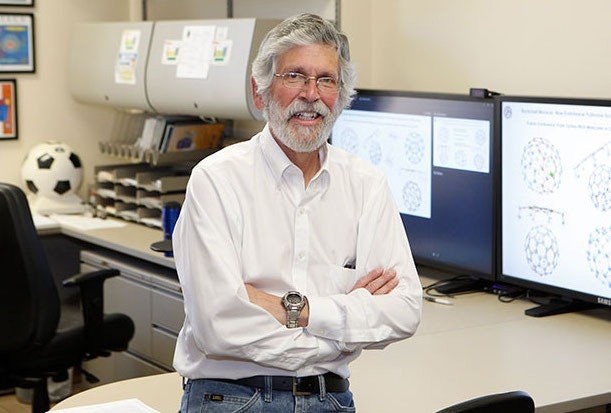Researchers explain how they obtained the highest level of energy storage—capacitance—in a supercapacitor in a new, ground-breaking chemistry study.
 A landmark study led by Luis Echegoyen, PhD, Professor Emeritus at The University of Texas at El Paso, and Marta Plonska-Brzezinska, PhD, of the Medical University of Bialystok, Poland (not pictured), was recently featured in the journal Scientific Reports, which is published by the leading research publisher Nature Portfolios. It describes how they have achieved the highest level of energy storage—also known as capacitance—in a supercapacitor ever recorded. Image Credit: The University of Texas at El Paso.
A landmark study led by Luis Echegoyen, PhD, Professor Emeritus at The University of Texas at El Paso, and Marta Plonska-Brzezinska, PhD, of the Medical University of Bialystok, Poland (not pictured), was recently featured in the journal Scientific Reports, which is published by the leading research publisher Nature Portfolios. It describes how they have achieved the highest level of energy storage—also known as capacitance—in a supercapacitor ever recorded. Image Credit: The University of Texas at El Paso.
The research was directed by Luis Echegoyen, Ph.D., Emeritus Professor at The University of Texas at El Paso, and Marta Plonska-Brzezinska, Ph.D., of the Medical University of Bialystok, Poland. The research was published in the journal Scientific Reports, which is published by the leading research publisher Nature Portfolios.
In supercapacitors, electrical energy is stored between two metal plates close to one another but isolated by a surface that does not conduct electricity. Supercapacitors are similar to batteries, but instead of using chemical transformations to store and retrieve energy, batteries do so by using surfaces that are oppositely charged. They are frequently used in machinery like electric cars, buses, trains, and cranes that necessitate a rapid discharge of energy.
This is a big step forward and gets us closer to achieving supercapacitors with high energy density, which would radically change how we store and manage energy. I’m very proud to be part of the team that reached this milestone.
Luis Echegoyen, Faculty Member, Department of Chemistry and Biochemistry, The University of Texas at El Paso
According to Echegoyen, supercapacitors have great potential since they can charge much quicker than batteries—within seconds to fractions of a second. Existing supercapacitors, however, can only store a limited amount of energy, limiting their potential applications.
The researchers note that if supercapacitors could be crafted to hold more energy, they would be physically lighter and charge much quicker than batteries, which would have an important commercial impact.
The new supercapacitor developed by Echegoyen and Plonska-Brzezinska attained a record level of storage, or capacitance, by employing a material with a carbon “nano-onion” core structure, which generates different pores that allow for greater energy storage.
I’m very happy to see this innovative research get the attention it deserves. This is further proof of the academic and research excellence by faculty here at UTEP.
Robert Kirken, Dean, College of Science, The University of Texas at El Paso
Journal Reference:
Hryniewicka, A., et al. (2023). Three-dimensional organization of pyrrolo[3,2-b]pyrrole-based triazine framework using nanostructural spherical carbon: enhancing electrochemical performance of materials for supercapacitors. Scientific Reports. doi.org/10.1038/s41598-023-37708-7.